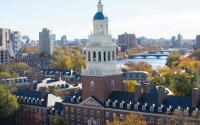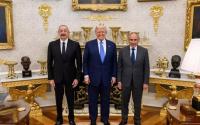Evidence of Global Warming
Common Dreams / Published on Wednesday, December 3, 2003 by the lndependent/UK
As the Kyoto protocol, the world climate change treaty, starts to crumble because of Russian reluctance to ratify it, evidence is mounting of the very threat it is designed to counter.
Since January, many of the predicted consequences of a steadily warming atmosphere have started to come true. In June the World Meteorological Organization drew attention to extreme weather events across the world and in a highly unusual move, linked them to global warming explicitly.
India, Sri Lanka and the United States have registered record high temperatures, rainfall and tornadoes this year. There has been an increasing number of scientific reports of rapidly melting ice in both the Arctic and the Antarctic, and rapidly melting mountain glaciers. Continental Europe has seen forest fires like never before, and great rivers like Italy's Po have been reduced to a trickle.
Britain had its own extreme: on 10 August we registered the first three-figure Fahrenheit air temperature - 101.3F (38.5C) - in a reliable record that goes back to 1659.
The 10 hottest years in the global temperature record, which goes back to 1860, have all now occurred since 1990, with the hottest being 1998, which, according to the Climatic Research Unit of the University of East Anglia, was probably the hottest year in the northern hemisphere for 1,000 years.
It is followed in the table by 2002 and then 2001, and it is already clear that 2003 will also be in contention as one of the hottest years ever.
In Britain, four of the five hottest years in the Central England Temperature Record, which goes back almost 350 years, have also occurred since 1990.
If the evidence of global warming is mounting, how can the treaty designed to counter it be going down?
The answer lies in its own contradictions. The Kyoto protocol requires legally binding cuts in greenhouse emissions, yet in some countries the demand for fossil fuels is so strong that the agreement would be impossible to fulfil. This is the case in the United States where four per cent of the world's population spews out nearly a quarter of the world's total greenhouse emissions.
Led by Bill Clinton's then Vice-President Al Gore - he wrote the lauded environmental polemic Earth in the Balance - the US delegation at the Kyoto negotiations in 1997 signed up to what some commentators now see as a lot more than it could afford.
It agreed that America would, by 2010, cut back its emissions of carbon dioxide and other greenhouse gases to seven per cent below where they were in 1990.
But thanks to Mr Clinton's dot-com boom, the American economy has expanded and by 2010 CO2 emissions will have shot up accordingly.
To get back, by 2010, to the level prescribed by the treaty would mean an emissions cut of more than 30 per cent. Cut your energy use by a third? Short of turning all Californians out of their cars and onto bikes, this is simply not possible.
Senior figures in the State Department recognized this at the time, so in a clever move they found a potential way for the US to meet its target: so-called "flexible mechanisms" or, in effect, licensed cheating.
The most important of these was the ability of the US to buy notional "surplus emission cuts" from countries that had them to spare, as did Russia after its heavy industry collapsed in the 1990s.
But the US would have to pay through the nose for these tactics and after the Republicans regained control of the White House under George W Bush, their analysis was brutal: "Why should we pay a billion dollars to the Russian mafia to keep a car plant open in Chicago?" This view, and the fact, strongly resented in Congress, that only industrialized nations and not developing countries like India and China, were required to cut emissions under the treaty, led George W Bush to repudiate it as one of his first major acts of policy.
But in doing so he also deprived the Russians of one of the major attractions it had for them - the chance to sell their surplus emission cuts for a great bundle of cash.
Deprived of the possible benefits, the hard-nosed economists around President Vladimir Putin such as Andrei Illarionov focused on the treaty's potential drawbacks, and yesterday it was Mr Illarionov who signaled his country's own withdrawal.
DOOMSDAY FOR THE PROTOCOL
* The Kyoto Protocol sets targets for countries to reduce emissions of greenhouse gases identified as contributing to global warming.
* 188 nations are attending a 10-day United Nations summit on global climate in Milan to work on the treaty
* 120 countries, including Britain, have signed the protocol since it was formulated in Kyoto in 1997.
* 55 countries are required to ratify the pact in order for it to take effect
* The countries must include the industrialized nations that account for at least 55 per cent of that group's carbon dioxide emissions in 1990
* To date, the nations that have signed account for only 44.2 per cent
* The United States, the world's number one polluter, withdrew its 36 per cent stake in 2001
* As Russia accounts for 17.4 per cent - which would allow the group to exceed the required 55 per cent total - its ratification is an essential casting vote for the protocol's implementation
* Countries would be able to buy or sell the right to pollute, depending on its own emissions levels.
* As a result, economists have argued that Moscow would stand to gain from the pact as the collapse of many of its Soviet-era industries would leave it with billions of pounds-worth of excess emission quotas to sell
* The first hint that Russia might not commit itself to the treaty emerged two months ago when President Vladimir Putin stated that a warmer climate would benefit Russian farming and enable people to save money on coats in winter.
* The EU has passed legislation to permit the trading of emissions to commence in 2005






